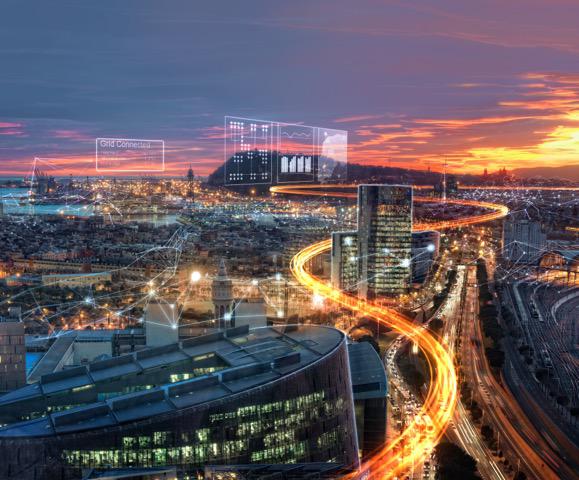Micro-Grids Give New Meaning To Community Empowerment
Imagine a time when brand new communities can be built from the ground up with the knowledge that they can meet their own energy needs. If that’s not tantalising enough, imagine an “intelligent infrastructure” that enables community “micro-grids” to seamlessly communicate with each other and the grid to ensure that excess energy is directed to where it’s needed most.
This future is much closer than you think.
In Australia, a number of developments are already exploring this “next-generation utility infrastructure”. Unlike traditional developments that rely on traditional grid infrastructure for electricity supply, these explore localised generation and consumption with only limited grid connection.
Some even explore the provision of all utility services in such an arrangement, including drinking water, wastewater and data. It’s envisaged that all of these utility services will be provided for by a community co-operative who would retail them.
Micro-grids enable local energy generation and storage networks such as community-owned solar and wind power, and battery energy storage technology, to distribute energy to consumers reliably. If successful, it’s likely they would become the catalyst for other communities to adopt the off-grid renewable model.
Siemens, a global leader in Distributed Energy Systems (DES) and intelligent infrastructure, has deployed a number of such projects. One global example is at Blue Lake Rancheria, a Native American reservation in California, where Siemens is building a micro-grid to supply electrical power to the reservation's key buildings and institutions across 0.4 square kilometres.
The micro-grid's photovoltaic plant will be the largest in California's Humboldt County. It is expected to help save 150 tonnes of CO2 each year, with the network control system handling energy management functions of the local power supply grid.
Supplemented by integrated weather and load forecasting tools, the reservation will be able to accurately predict power consumption in order to control the distributed power generation systems and storage units dynamically – and manage energy efficiently.
Executive General Manager of Siemens Australia, Andrew Theodore, says the digitalisation of the Australian energy market is well underway – although much larger populations, and the consequential demand for energy in Europe and North America, has seen the trend advance more rapidly in those markets. However, he believes this gives Australia an advantage.

“What we’re seeing is a future where different infrastructure in cities and communities is connected through digitalised technologies,” Theodore says.
“A project that would take three to four years can now be done in half that time with digital tool kits. We can learn from Europe and North America and focus on how to make the technology smarter and more relevant to the needs of our consumers. Digitalisation [of the energy market] is real today, and it’s going to be even more real in the next five years.”
Andrew Theodore says the rapid change in the way energy needs are being met is partly in response to new opportunities such as renewable energy and smart technologies, and also because of government policy goals to reduce emissions. There’s another key driver: consumers.
“Change is being driven by consumers who are fully aware of energy security needs and the high cost of energy,” he says.
“This presents retailers and utilities with a clear opportunity; the challenge is to embrace change and develop new business models to support the rapidly changing marketplace.”
Distributed Energy Systems (DES) encompasses an array of generation, storage, energy-monitoring and control solutions, and offers energy consumers opportunities to reduce cost, improve reliability and secure additional revenue through on-site generation and “dynamic load management”.
A report by Siemens and engineering group Arup, ‘Distributed Energy Systems: Flexible and Efficient Power for the New Energy Era’, identifies significant value opportunities for medium to large-scale DES applications tailored to user requirements such as cost reductions, energy efficiency, security of supply and carbon reduction.
The report notes that DES can be applied widely, including manufacturing facilities, office buildings, urban residential districts and rural communities.
The economic, social and environmental benefits include better system resilience and efficiency, including lower-cost grid balancing, reduced greenhouse gas emissions and affordable extension of grids to unconnected communities.
“Local, decentralised and controllable DES generation and storage sources can be designed to provide the end user with local resilience or even full independence from the grid,” the report says.
“The benefits accrue to grid operators as well: DES can manage demand to reduce peak loads when infrastructure is nearing capacity, thus postponing the need for major grid reinforcement investments.”
Ultimately, it will be up to consumers to decide how active they want to be in the new energy marketplace.
“Consumers can be active and produce electricity for their own needs and transfer any excess energy to the grid for other customers to enjoy; or they can choose to be passive consumers,” Theodore says.
“I call that the energy of choice.”
For more information on Distributed Energy Systems, see our video below.
The Urban Developer is proud to partner with Siemens to deliver this article to you. In doing so, we can continue to publish our free daily news, information, insights and opinion to you, our valued readers.















